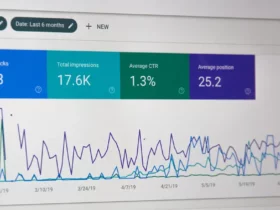Since the collective initiative of Google, Yandex, Microsoft, and Google in 2011, the SEO industry has created a standardized data structure supporting a list of properties and values known as SEO schema.
Though still considered a hype, there remains a lot of questions and confusion on the role of structured data, what it is for, and how one can implement them into a website.
What is known, though, is that websites are better performing in terms of ranking when they have structured data.
These are a set of information organized and structured in a particular manner.
From an SEO perspective, structured data helps search engines better understand a site because data is organized and tagged based on text groups containing relevant information.
It is often easy to know how a website performs from the standpoint of the user.
But on the other side of the spectrum, identifying which data should be organized and structured, and knowing how to go with the primary and complex processes falls on the precepts of which texts and keywords are essential.
The complexities are further bounded by returning accurate results to your website users and their searches.
Behind the scenes and part of a website’s development process, these codes tell the search engines how each data is organized on the page.
They are essential queues telling the search engine crawler what information can searchers gather from each page of the website.
How to Implement Structured Data for SEO
Schema markup is a new form of optimization, providing powerful results. Though the SEO technique is already available, it still is relatively unused because of the complexities of the concepts and methods.
Being able to grasp its full potential and knowing how to implement the strategy into your website, conclusively proves to have positive effects on your website’s ranking.
- Understand the concepts to a schema mark up. Semantic vocabulary or schema markup is a code embedded into your website to help search engines return users with a more informative search result. It incorporates the same techniques and data presentation used in rich snippets, additional elements that provide Google with information about your site.
- Know the importance of schema markup. Google and the other search engine has an intricate way of identifying your website’s data. There are a hundred of data types associated with their nature. The schema markup process uses the key elements itemscope and itemtype to specify what an item is.
- Learn the basics of schema markup. Schema markup is composed of an HTML microdata format developed from the inter-industry collaboration. These prearranged code markers are the significant drivers telling search engines what it can do with your website’s information.
More of the functions of SEO schema comes from understanding your website’s information. It includes telling the SE platform what your website’s data means and not just what it is saying. In all sense, schema markup was designed to help users generate information on what your site is.
- Learn how to apply schema markup. Topping the SERP and increasing the click through rate are the primary goals for using SEO schema on your website. It is accomplished by doing the right protocol strategy approved by the Google search engine.
- Use Google’s Structured Data Markup Helper.
- Select the data type and content from the options you plan to markup.
- Tag the page or paste the article’s URL that you intend to markup.
- Select and highlight the elements for markup.
- Complete the process by creating the HTML.
- Add the SEO schema markup to your website’s pages.
- Test run what the added markup will look like by using the Structured Data Testing Tool.
Is Structured Data Right for You?
Structured data implementation is highly related to the kind of content your website provides. It entails understanding the goals of the materials found within your site to develop a good markup strategy.
One crucial facet of engaging this SEO schema into your website’s platform is to help search engines know who is who and what is what on the web.
For example, a political candidate will have better leverage on the internet by adding an official or verified link to his campaign website and social media account.
In turn, Google has a better way of identifying which belongs to which part of the web and how they relate to each other.
The increasingly fruitful web results are part of what makes the internet tick too many users.
Structured data provides value to the SERP with its imposing presentation of information.
Implementing Structured Data on Your Site
Better implementation of structured data comes with understanding how it improves your website’s performance.
Learning the different structured data types is part of the preliminary to an effective schema markup campaign.
It would help you identify useful attributes and the properties that suits your website.
And since the schema vocabulary is sophisticated, a complete understanding of their specific features will help you markup the essential characteristics to your website.
How to Identify Structured Data Opportunities
There are several ways of identifying where structured data has been added into your website.
The critical question, though, is whether the right markup has been used for a particular keyword or key phrase.
The Structured Data Report found in the Google Search Console is one of the identifying containers of structured data and one of the first places to look.
Additionally, Google recommends several proven techniques, including adding your markup to individual product pages, markup multiple entities individually, and being specific when choosing the type of schema you want to add to a page.
Structured data benefits your business by increasing your website’s visibility to your potential customers.
The continued improvement of Google and other major search engine warrants an up-to-date website that offers enhanced and quick search results.













